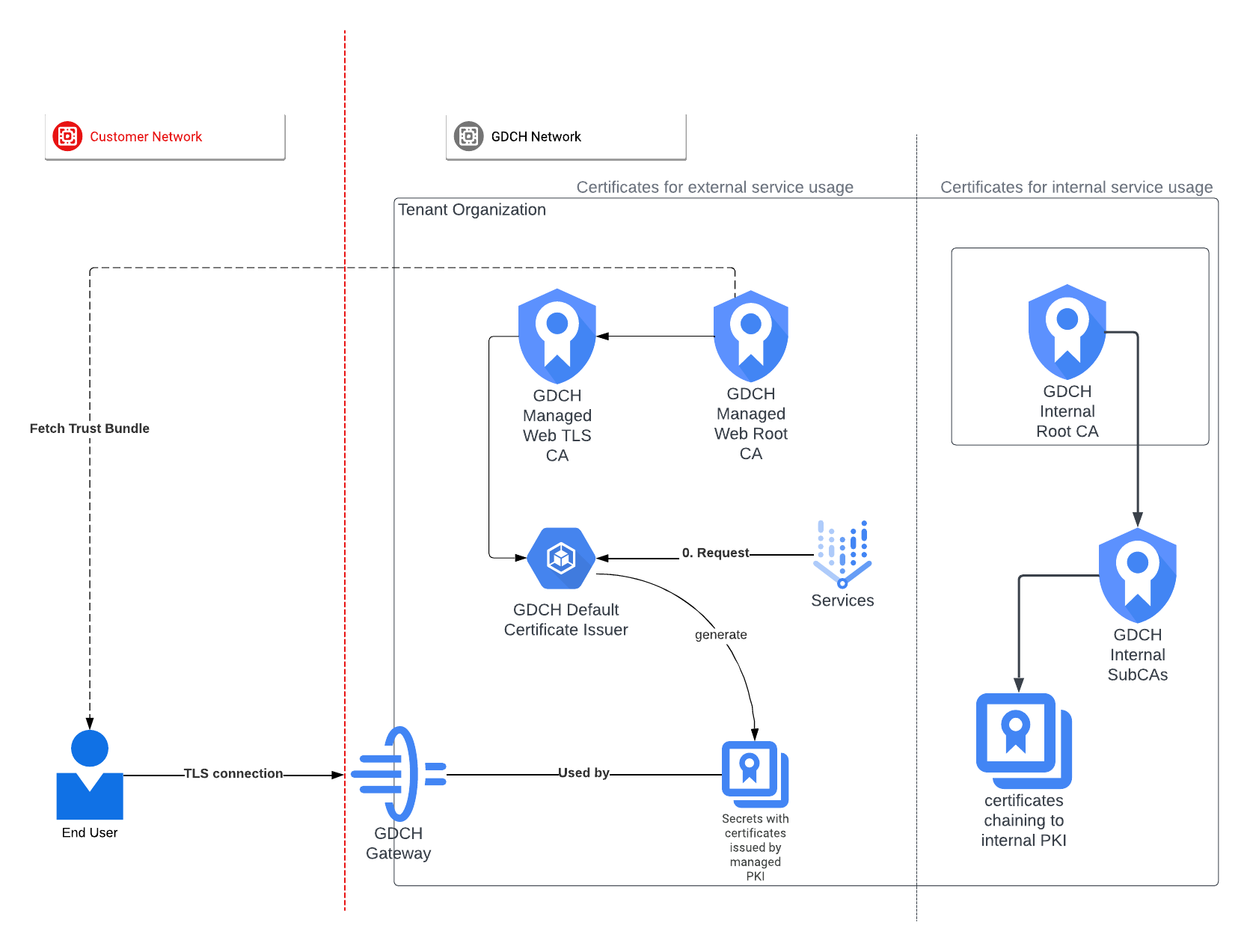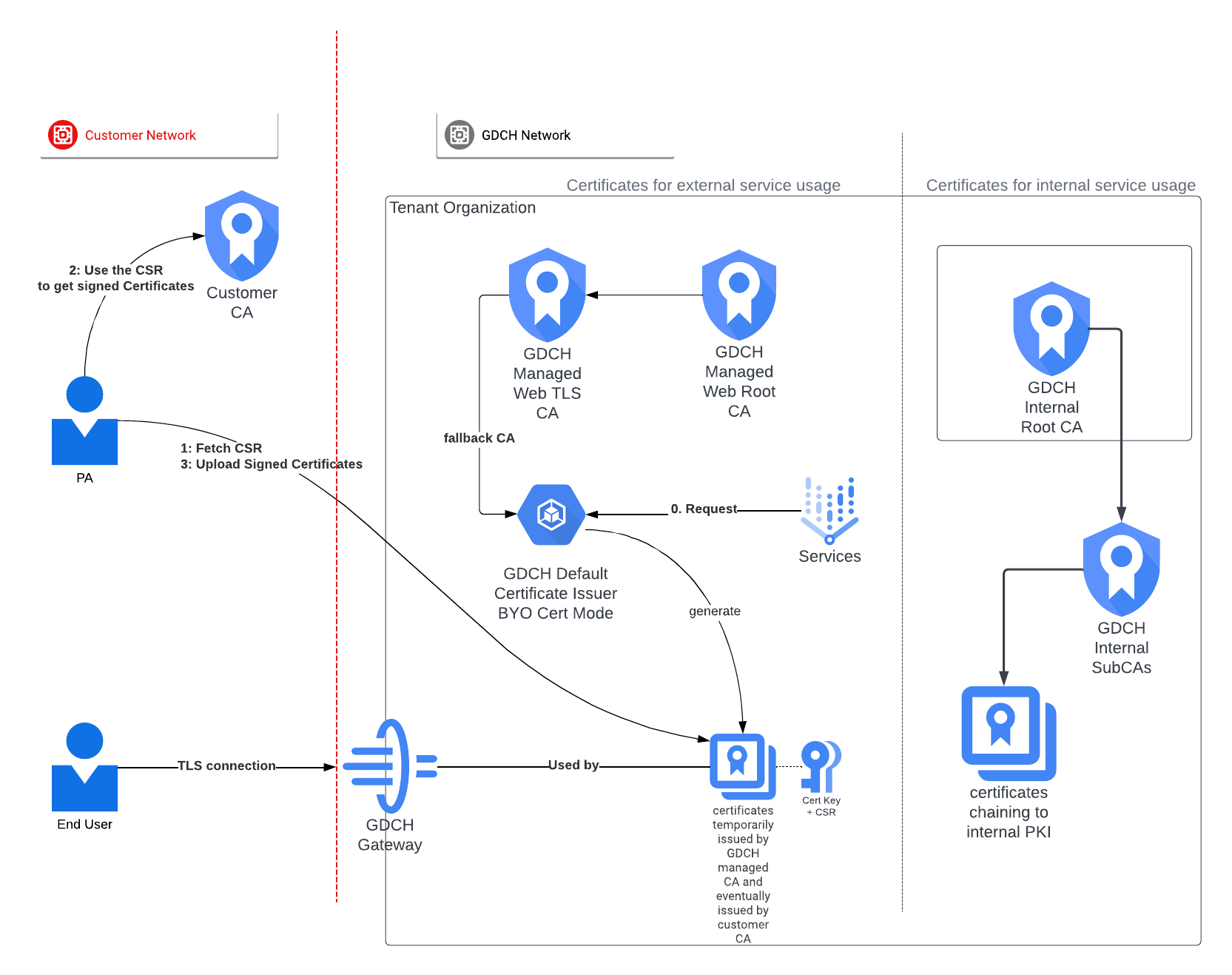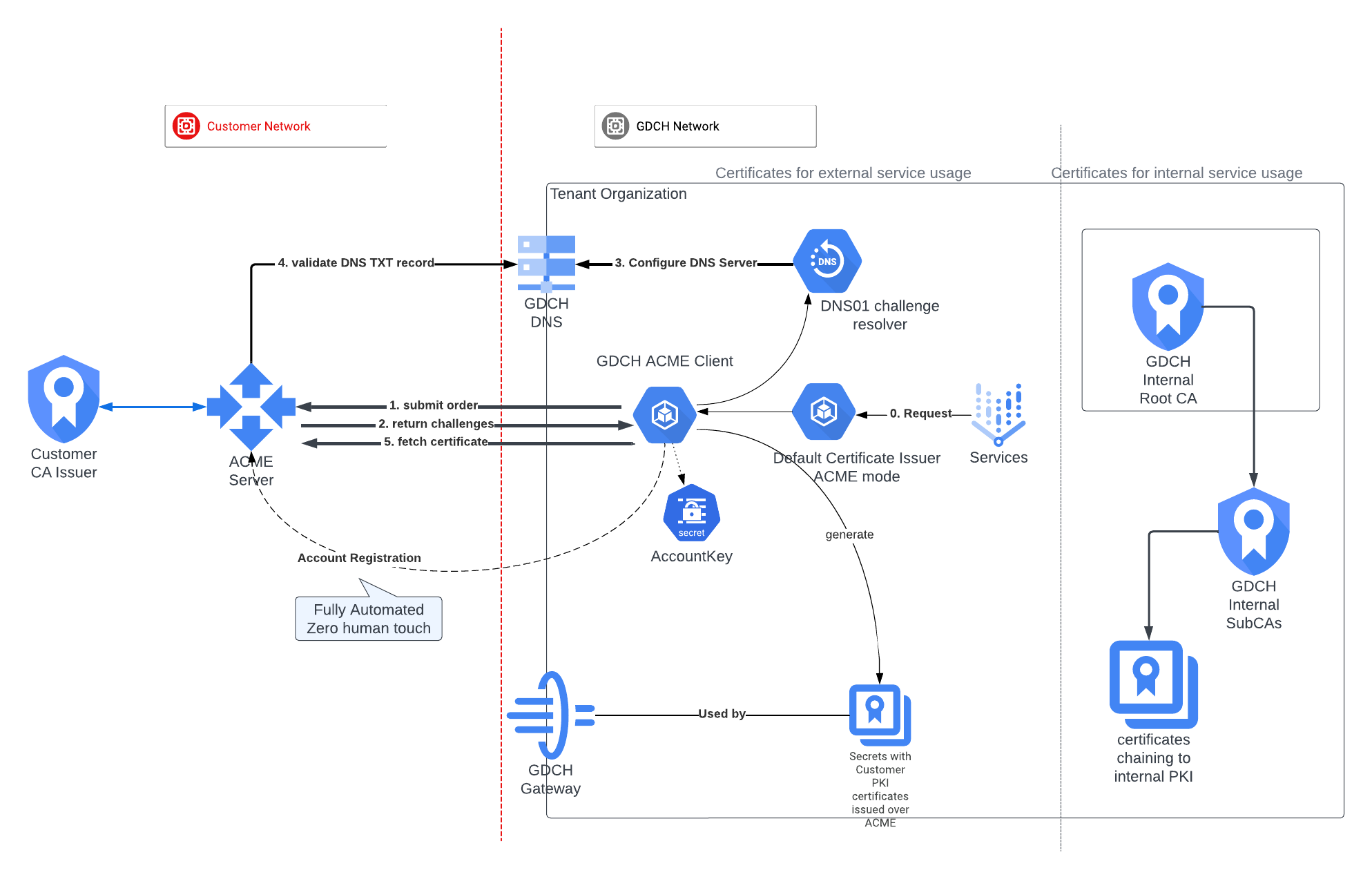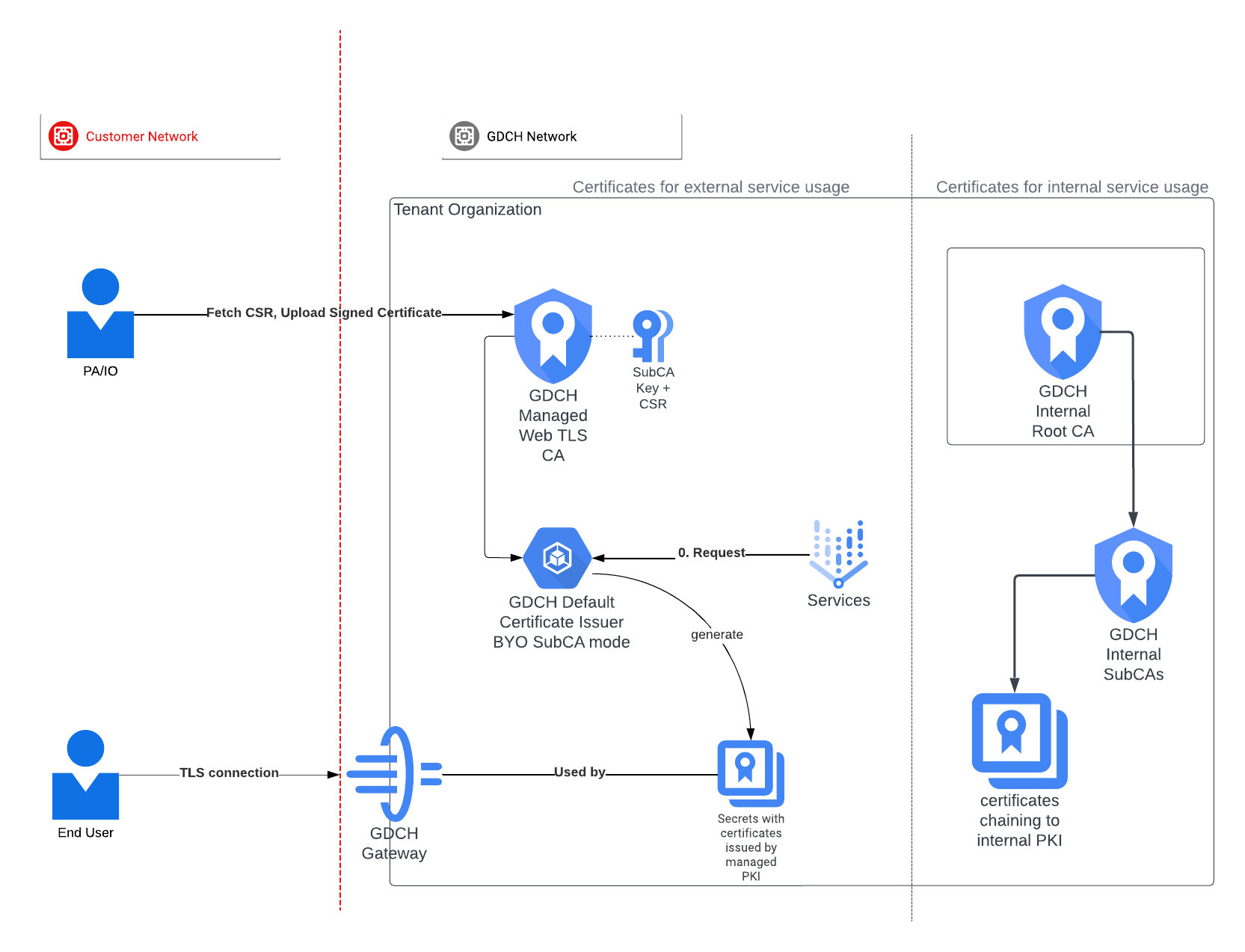Google Distributed Cloud (GDC) air-gapped provides a public key infrastructure (PKI) API for you to obtain a web certificate. This API supports several user modes:
- Fully-managed: certificates issued by GDC PKI infrastructure and chained to a GDC-managed self-signed root certificate authority (CA).
- BYO cert: you provide a pool of certificates with a default wildcard certificate. GDC will use the best matched certificate for your service.
- BYO cert with ACME: certificates used by public facing services issued by your ACME server.
- BYO SubCA: certificates issued by GDC PKI infrastructure and chained to your SubCA. You must provide the SubCA and let GDC operate it.
Infra PKI mode definitions
This section provides a detailed explanation of each PKI user mode.
Fully Managed mode (default mode)
In fully managed mode, each organization admin cluster relies on the GDC public key infrastructure (PKI) to issue certificates. When you create a new organization, this mode is the default mode applied. Afterwards, you can switch to a different PKI mode.
With this mode, you must obtain and distribute the root CA to your environment for trust.

BYO Certificates mode
BYO certificate mode supports signing leaf certificates with external or user-managed CAs. This mode generates a certificate signing request (CSR) for every certificate request. While waiting for signing, BYO cert mode searches for an existing customer-signed certificate among the pool that matches with the certificate request:
- If it can't find a matching certificate, a GDC-managed fallback CA issues a temporary certificate ready for immediate use.
- If it finds a matching certificate, it uses the matching certificate as the temporary certificate for the current request.
To sign the CSR, you must perform the following steps:
- Download the CSR from the
Certificatecustom resource status. - Upload the signed certificate and the external CA certificate to the same
Certificatecustom resource with an update to thespecfield.
To manage verification and replace the temporary certificate, Distributed Cloud updates the certificate secret with the uploaded certificate and the external CA. You don't have to change your trust stores.
For more information, see Sign the BYO certificate.

BYO Certificates with ACME mode
With BYO Cert with ACME mode, a GDC-managed ACME client deploys at a Distributed Cloud site and communicates with an ACME server; a CA deployed by you at your site. The ACME server uses the ACME protocol to request, validate, and manage certificates.
The ACME protocol supports different challenges, for example, HTTP-01 and DNS-01. These challenges help prove domain ownership and obtain certificates automatically. Distributed Cloud uses the DNS-01 challenge. With this challenge, the Distributed Cloud client adds a specific DNS record to the domain's DNS zone. Once the challenge completes successfully, the ACME CA will automatically issue the certificate. You don't have to change your trust stores.
To learn more about the ACME protocol, see the Datatracker public document for RFC 8555: https://datatracker.ietf.org/doc/html/rfc8555.

BYO SubCA mode
With BYO SubCA mode, a CSR for the SubCA generates within the Distributed Cloud
organization admin cluster. You must sign the CSR request, and upload the signed
certificate into the system. For more information, see
Sign the BYO SubCA certificate.
You can create a CertificateIssuer custom resource that points to this SubCA
and mark it as the default CertificateIssuer.
The newly created subCA issues all of the subsequent web certificates. You don't have to change your trust stores.

Transition to a different PKI mode
The PKI API supports transition from the default fully-managed mode to other supported custom modes. For more information, see transition to different PKI modes.
